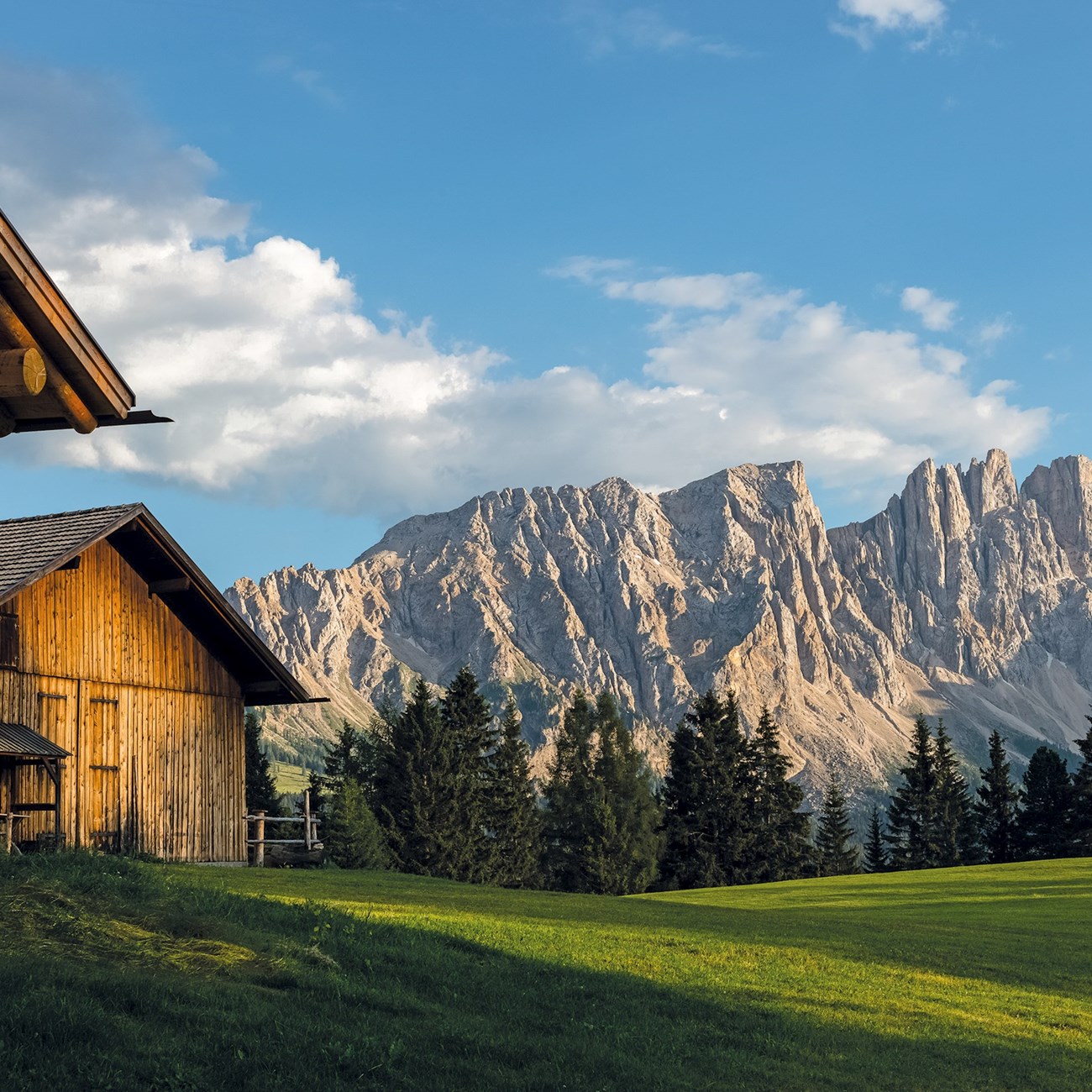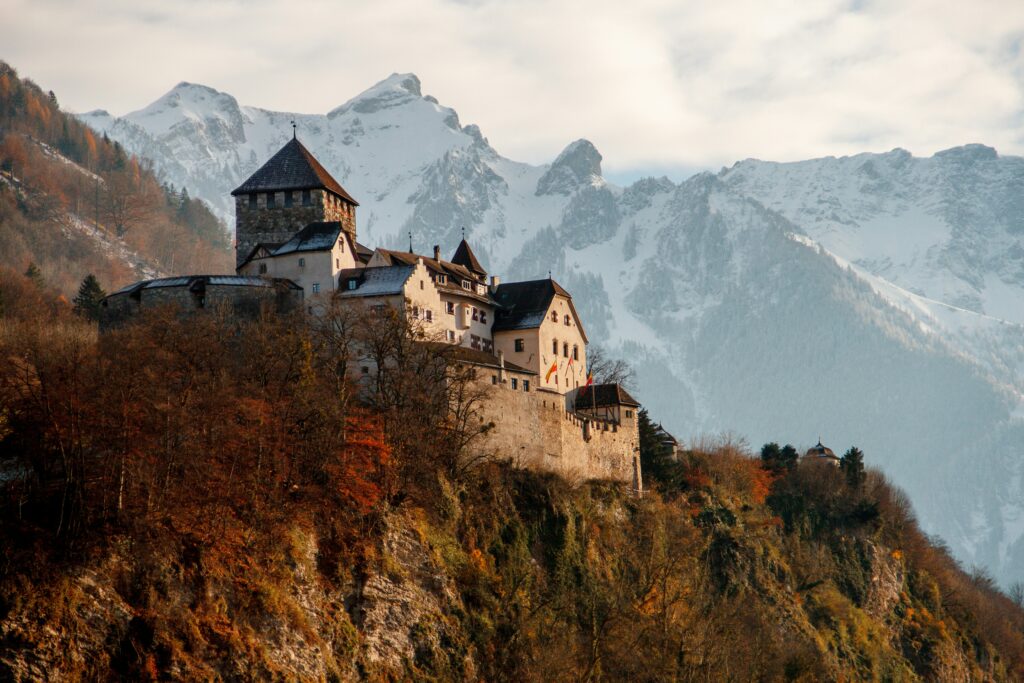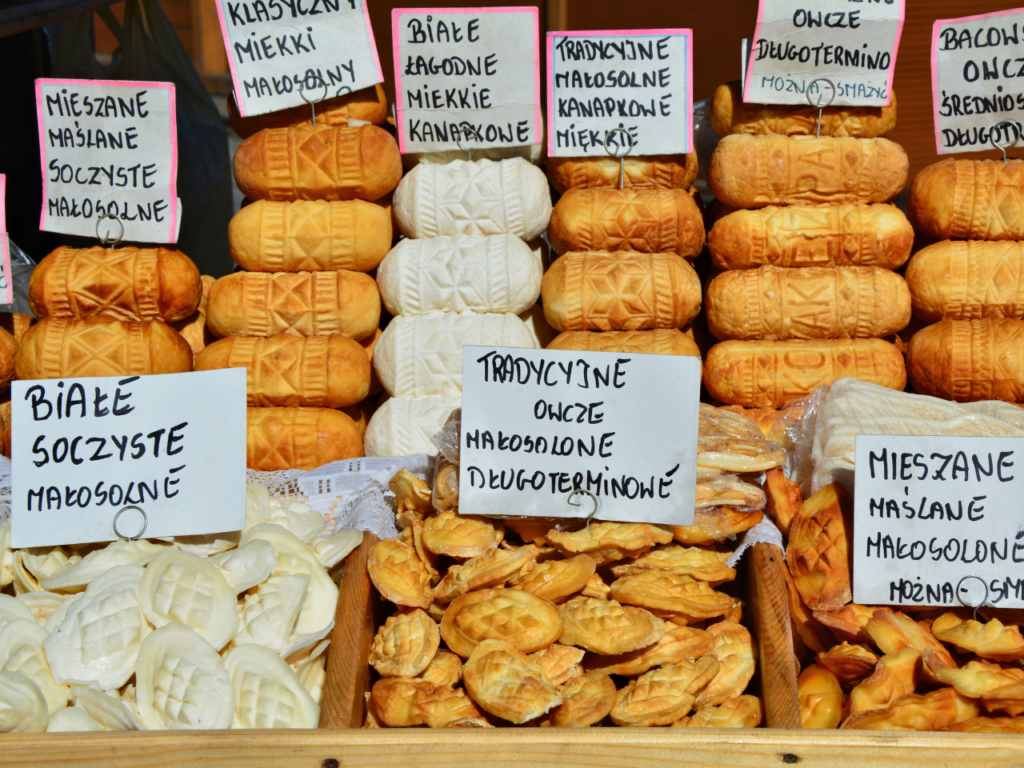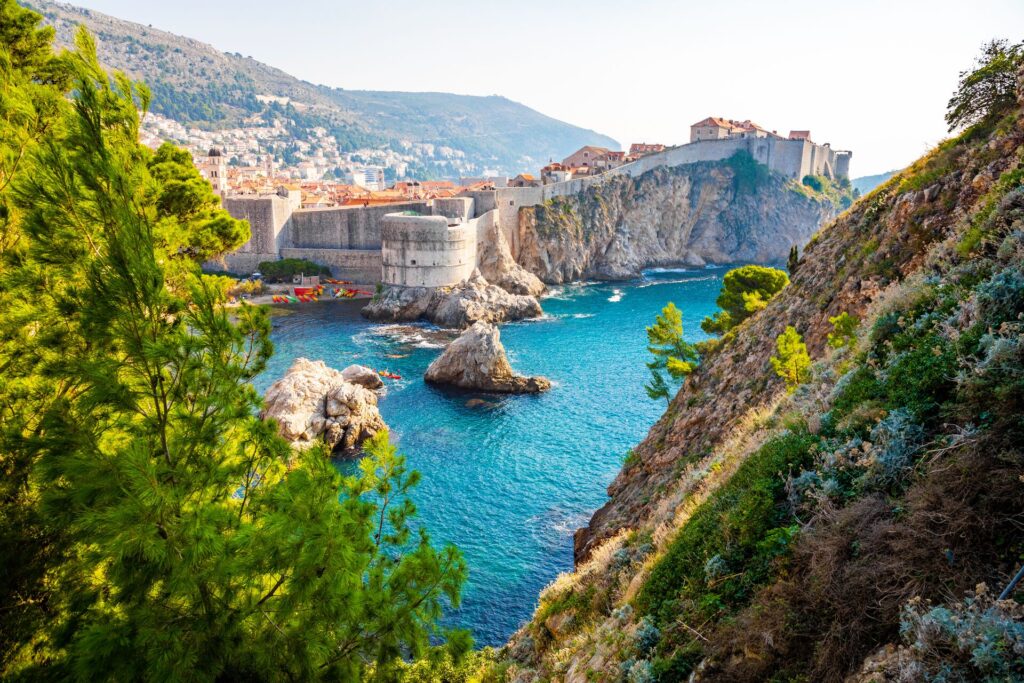15 Facts About Venice You Probably Didn’t Know
You need no special appreciation for art or architecture to admire Venice, though a little historical context goes a long way to understanding the magic of Italy’s isle-filled lagoon. Even today, historians and archaeologists are uncovering new facts about Venice that paint stunning new chapters in the city’s story. From its intense floods and elite families to recent findings, here are 15 facts about Venice that you need to know before your next visit.
1. The famous Procuratie Vecchie was only recently opened to the public
One of the newest facts about Venice is also one of the most engaging: the Procuratie Vecchie in St. Mark’s Square is now open to the public. Never before has the public been able to tour this iconic building; the majority of onlookers were forced to only gaze at the Neoclassical facade since the 1500s. The fourth floor is the only floor open to the public, as the lower three were privately owned. It includes access to a cafe where visitors can stand on the rooftop terraces to admire St. Mark’s Basilica and bell tower.
2. The iconic Venetian cocktail is named after a hometown artist
Harry’s Bar is arguably the most popular watering hole in Venice and for good reason: it’s here in 1948 that the iconic Bellini cocktail was born. The bar’s owner sought to combine Prosecco with in-season white peaches from Verona. The owner’s name, Giuseppe Cipriani Senior, is noticeably absent from both the bar’s and the drink’s names. The bar was named after an American investor while the drink raises a glass to Giovanni Bellini, a Venetian painter of the Renaissance era who helped Venice rise to the artistic heights of Rome and Florence.
3. World War 1 brought a new challenge to Venice’s well-guarded city
Venice enjoyed a natural barrier from invasion for most of its history. The Venetian Lagoon protected the city, its inhabitants, and its landmarks from invasion by sea and by foot. World War I brought a new challenge to this well-guarded city: enduring aerial bombardment.
Italy joined the Allies in 1915 which drew the ire of Austria-Hungary and Germany. Bombings were carried out until 1918, sending more than 1,000 explosives into Venetian streets. The Venetians banded together to save not only themselves, but the art and artifacts as well. Some areas, like the ceiling fresco in the Church of Scalzi, were completely destroyed. Other structures, like the Santa Maria de Nazaret church, were completely rebuilt after it was bombed.
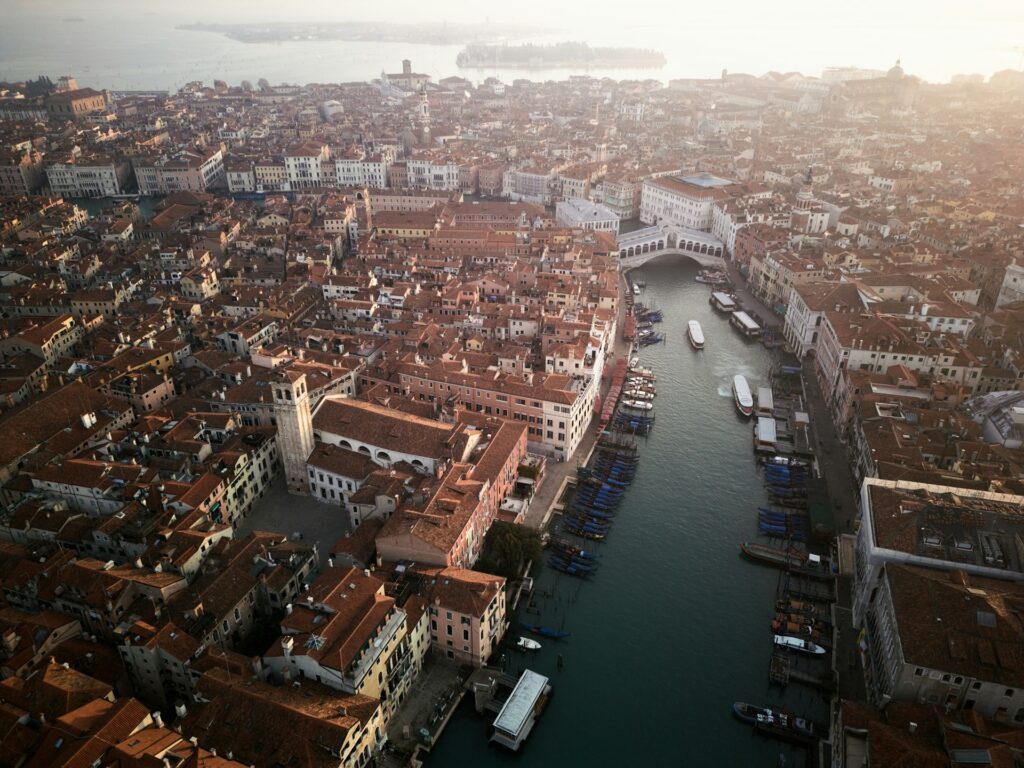
4. The Venezia Santa Lucia train station was named after the church it replaced
If arriving in Venice by train, the Venezia Santa Lucia train station is your first introduction to the city. Its name is a tribute to the former church and convent that once stood in its place. The Santa Lucia church was consecrated in 1313 and once held the alleged remains of Saint Lucy. Less than 500 years later, a Napoleonic decree shut the convent down. By 1863, both the convent and the church were destroyed to create a space for the current train station that was completed in 1954. The remains of St. Lucy are now held in San Geremia church.
5. Gondolier licenses are hard to come by
A gondola ride is a quintessential activity for most travelers visiting Venice, but few know one of the most surprising facts about Venice: steering a gondola isn’t a job any local can take up. Similar to a driver’s license, the city of Venice issues gondolier licenses. The difference is that these licenses were typically passed down from father to son. Today, there are just over 400 active gondolier licenses; though that number could change as the city recruits new gondoliers to meet the increasing demands of tourism.
6. William Shakespeare likely never visited Venice
‘Othello’ and ‘The Merchant of Venice’ are two of William Shakespeare’s most popular plays, though the Bard likely never visited the city he used as a setting. There are no historical records that put Shakespeare in Venice or any other Italian city. The Venice in his mind’s eye and script notes was probably influenced by maps, artwork, books, and stories of Venice that he heard from those who travelled there.
7. Record flooding has hit Venice multiple times since 2008
Acqua alta, a high tide peak in the northern Adriatic Sea, is no stranger to Venice. The city seemingly floating on the lagoon takes on substantial water during acqua alta — so much so that locals must slide on tall waterproof rubber boats to visit businesses, homes, and landmarks.
Checking historical records shows concerning acqua alta facts about Venice: it’s happening more frequently and at higher levels. Six of the top ten highest acqua alta events on record have occurred since 2008, bringing between 149 cm and 189 cm of water into the city.
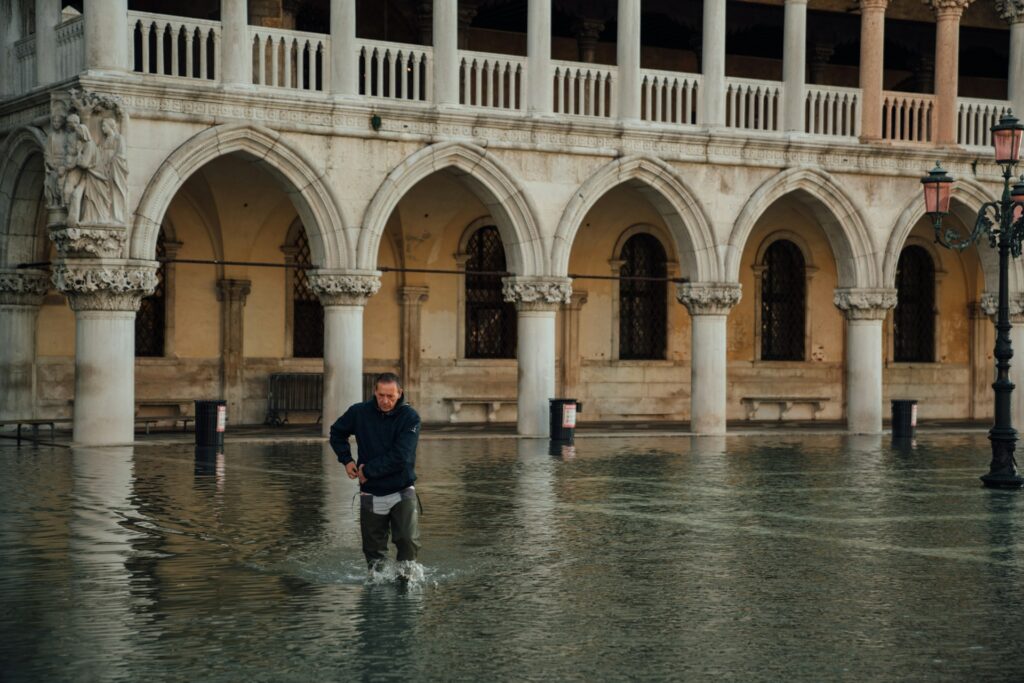
8. Streets bare the name of one of Venice’s oldest families
To say that Venice has history around every corner is an understatement. As you tour the historical centre, spying the Ponte di Rialto and Saint Mark’s Basilica, don’t forget to take note of the streets you stroll. You’ll notice multiple streets with “Contarini” in the name. These calles were named to honor the Contarini family, one of the oldest families in the city. Their family history includes not only helping name the first Doge in 679 AD, but also birthing children that would go on to become Doges themselves.
SAVE UP TO $2,000 PER COUPLE* ON YOUR FIRST PREMIUM TOUR.
Plus receive latest offers, travel inspiration, and discover how your travels will make a positive impact. Together, WE MAKE TRAVEL MATTER®. Subscribe Now9. The island of Mazzorbo resurrected historic Venetian wine
Our first of two delicious facts about Venice’s Burano, you can stay on this island and sip on a glass of dorona wine — made from a grape that was once thought lost to history.
A family resurrected this “golden grape” after visiting an abandoned 7th-century Byzantine church on the island of Torcello. They took dorona grapevines, planted them on the island of Mazzorbo, then turned the golden grapes into dorona wine using ancient Venetian practices.
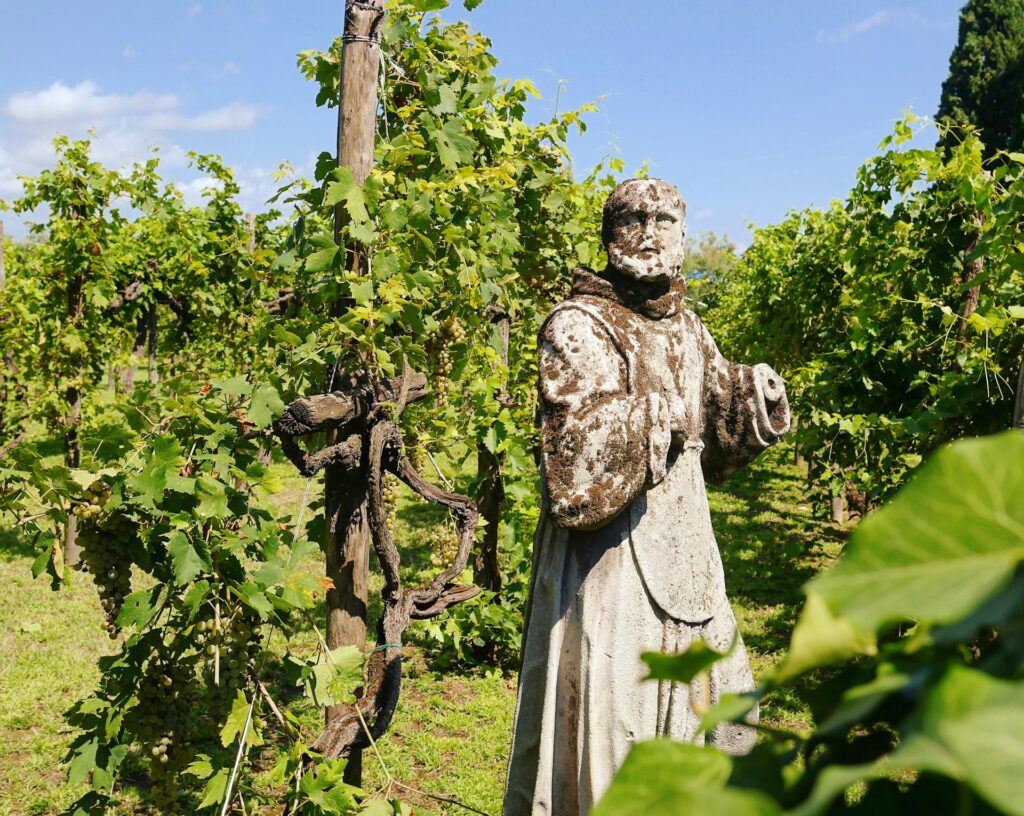
10. The Lion of St. Mark bronze sculpture is actually from China
Take a tour of the Piazza San Marco and you’ll learn more facts about Venice than you could ever hope to remember. One interesting bit of trivia brought to light by new research suggests that a famous fixture isn’t as Venetian as it appears.
The Lion of St. Mark that sits atop a column adjacent to Doge’s Palace was actually made in China. This 8th-century bronze statue was created during the Tang Dynasty then shipped to Venice where it was put on display in the city’s main square.
11. Piazza San Marco has more history hidden beneath the square
Step into the Piazza San Marco and you’ll be captivated by St. Mark’s Basilica and the Doge’s Palace. Don’t forget to look down, though; there’s more hidden history beneath Venice’s popular square.
Recent archaeological discoveries have unearthed a tomb and medieval church. The tomb, which holds the remains of at least five individuals, is thought to be related to the San Geminiano church that was destroyed in the 12th century.
12. Burano’s fishing families are experts in catching moeche
It’s common knowledge that Venetian seafood is delicious, particularly the crabs caught in and around the lagoon. Spider crab, or granseola, is quite popular, and the recently-deemed invasive species, blue crab, is even more common on menus today. But there’s one crab that foodies should keep an eye out for: moeche.
“Moleche” is a soft-shell crab that’s caught as a young crab shed its original shell. Within a few hours of shedding, an adult shell is fully replaced, which means catching these juvenile crabs is challenging. To make matters more difficult, this process only happens during a few days each autumn and spring.
Two facts about Venice moeche: it’s difficult to distinguish from similarly-coloured granche and the best place to find it is on the island of Burano. Fishing families have perfected the tradition of moeche catching across generations, offering you the best opportunity to taste this unique crab.
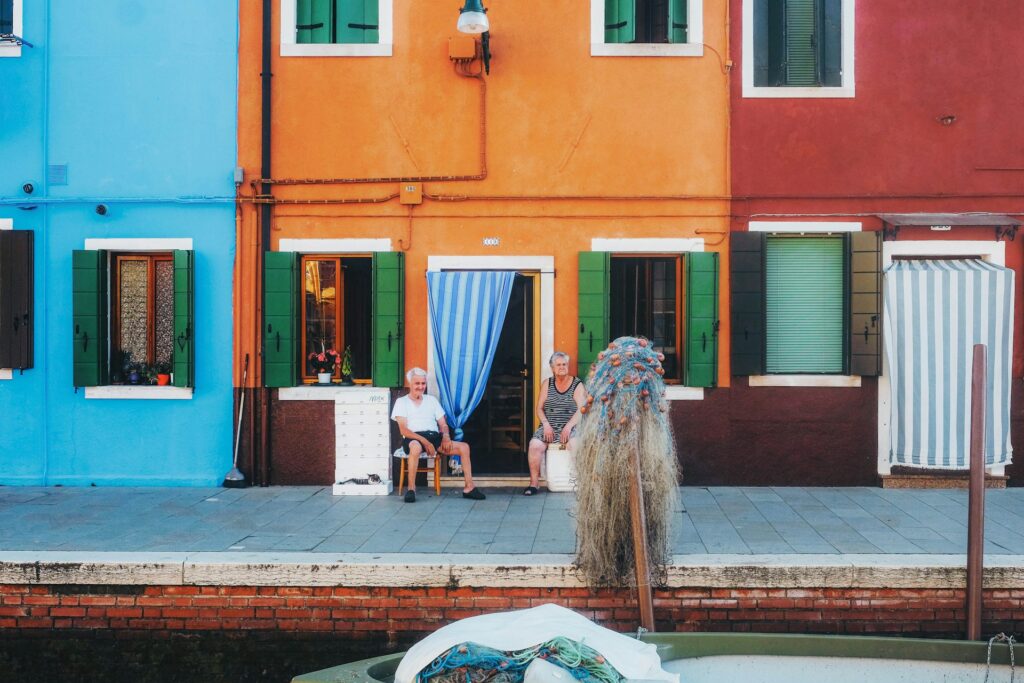
13. Venice has a street that narrows to 53cm
One of the well-known facts about Venice is that its historic district is free of vehicular traffic, though even if cars and Vespas were permitted on the streets, few would navigate the city with ease. Venice’s Calle Varisco, located in the Cannaregio neighborhood, is only 53 cm wide at its narrowest point. Other streets also offer a tight squeeze: the Calesela dell’Ochio Grosso is 58 cm wide, Calle de la Rafineria has a centimetre more, and the Ramo de Ca’ Zusto and Calle Streta stretch to 65 cm and 67 cm, respectively.
14. Thank Sant’Erasmo for Venice’s fresh produce
Ristorantes and osterias throughout Venice’s historic district will boast a menu of fresh produce, though greenspaces are noticeably absent throughout the area. While many locals do have small, private gardens hidden behind water-retaining walls, you’ll need to sail beyond the Grand Canal to find Venice’s farmer’s market.
The island of Sant’Erasmo is a quick ferry ride from Murano, but it feels like a significant departure from the bustling tourism centres. This quieter island has embraced agriculturism since the Middle Ages. Its population sits well under 1,000, leaving a generous portion of ground to gardens and vineyards. Sant’Erasmo’s famous violet artichokes are a must-taste, especially during May’s artichoke festival or October’s harvest festival.
15. The National Archaeological Museum is one of the oldest in Italy
The city of Venice, civitas Venetiarum, was founded in the late 9th century, long after the fall of the Roman Empire. While it’s certainly not one of the oldest cities in Italy, it does have one of the oldest museums in the country.
The National Archaeological Museum was born from two antiquity donations to the city: one by Domenico Grimani in 1523 and Giovanni Grimani in 1587. They were housed in the Library of San Marco and the collection continued to grow until 1812 when it was relocated to the Doge’s Palace. The museum was moved once more to the Royal Palace, where it remains today.
The museum is open to visitors each day where you’ll find antiquities, art, and an astounding collection from Greek, Roman, Egyptian, and Assyrian-Babylonian origins.

LIKED THIS POST? SHARE WITH YOUR COMMUNITY
